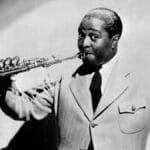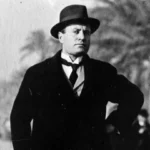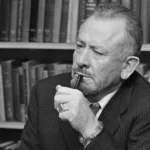This article delves into the intriguing story of Allen Heckard, a man whose life took an unexpected turn due to his striking resemblance to basketball legend Michael Jordan. From the everyday occurrences of mistaken identity to a high-profile lawsuit, Heckard’s experience raises questions about celebrity, image, and the sometimes-blurry lines between public and private life.
The Burden of Resemblance
Allen Heckard, a Portland shuttle bus driver, lived a life punctuated by constant comparisons to Michael Jordan. This wasn’t merely a fleeting resemblance; it was a near-daily experience of being mistaken for the iconic athlete. Imagine navigating everyday life with the constant stares, whispers, and requests for autographs and photos – not because of who you are, but because of who people think you are. Delve into the captivating life story of Adrienne G Scruggs and uncover the intriguing details surrounding Anthony Ray Stockelman. This constant pressure, this intrusion into his daily routine, is what Heckard claimed caused him significant emotional distress. Simple errands became ordeals, and the weight of this unwanted attention likely took a toll. Heckard “says he’s been mistaken as Michael Jordan nearly every day over the past 15 years and he’s tired of it.” (Overlawyered)
A Lawsuit Against Giants
In 2006, Heckard took a dramatic step, filing a lawsuit against Michael Jordan and Nike co-founder Phil Knight for a staggering $832 million. This David-versus-Goliath legal battle stemmed from Heckard’s claim that his striking resemblance to Jordan, and perhaps Nike’s implied use of that resemblance, led to this persistent public harassment. He argued that they had inadvertently made Jordan’s image so pervasive that it negatively impacted his own life. The lawsuit sought damages for emotional distress, highlighting the profound impact of mistaken identity on Heckard’s well-being.
An Unresolved Ending
Despite the media frenzy surrounding the lawsuit, its conclusion remains shrouded in mystery. The case eventually faded from the headlines, ultimately being dropped. The reasons behind this remain unclear. Did Heckard reach a settlement? Did he decide to withdraw his claim? The lack of definitive answers only adds to the intrigue surrounding this unusual story.
Did Allen Heckard Win?
The short answer is no. Allen Heckard’s $832 million lawsuit against Michael Jordan and Phil Knight ultimately proved unsuccessful. Filed in 2006 in an Oregon state court, the suit claimed emotional distress due to constant mistaken identity. Despite the substantial sum sought—$416 million from each defendant—Heckard received no monetary compensation. The lawsuit, which garnered significant media attention, was ultimately dismissed, leaving many questions unanswered.
The Basis of the Claim
Heckard, a 51-year-old shuttle bus driver, argued that being mistaken for Jordan almost daily for 15 years significantly impacted his life. He contended that Jordan and Nike’s marketing efforts, which made Jordan’s image ubiquitous, were responsible for this constant confusion. However, skeptics questioned the validity of his claim, citing noticeable physical differences between the two men. Heckard was three inches shorter, 25 pounds lighter, and eight years older than Jordan, raising doubts about the frequency of mistaken identity incidents. This skepticism was further fueled by Heckard’s later receipt of the satirical “True Stella Award,” an honor bestowed upon those who file seemingly frivolous lawsuits.
A Deeper Look at Fame and Identity
While Heckard’s legal pursuit failed, his story prompts broader questions about the implications of extreme fame and its ripple effects on those who resemble celebrities. Does widespread recognition create a responsibility toward look-alikes? Where is the line drawn between public image and private life? Heckard’s experience, though legally unresolved, provides a unique perspective on the unexpected challenges of living in the shadow of an icon.
What Grocery Store Did Michael Jordan Sue?
Michael Jordan, known for fiercely protecting his image and brand, didn’t hesitate to take legal action against Dominick’s Finer Foods, a Chicago-area grocery store chain then owned by Safeway. The reason? An unauthorized advertisement in 2009. Commemorating Jordan’s Basketball Hall of Fame induction, the ad featured his name and the iconic number 23 alongside a coupon for steaks. This seemingly innocuous gesture led to a six-year legal battle, culminating in an $8.9 million judgment in Jordan’s favor in 2015. This case underscores the immense value associated with Jordan’s brand and his commitment to safeguarding it.
The Intersection of Two Cases
While seemingly unrelated, the Dominick’s case and Heckard’s lawsuit share a common thread: the power and complexities of celebrity image. Jordan’s victory against Dominick’s demonstrates his proactive stance in controlling his likeness. Conversely, Heckard’s experience highlights the potential burdens of resembling a celebrity, the constant comparisons and unwanted attention. While Jordan sought to control his image, Heckard arguably sought to escape its shadow.
The Double-Edged Sword of Fame
These two contrasting cases offer a compelling glimpse into the multifaceted nature of fame. They illuminate the legal battles surrounding image rights, the unexpected consequences of resembling a public figure, and the challenges of navigating the often-blurred boundaries between public image and private life. They also serve as a reminder that even seemingly simple actions can have significant legal ramifications, particularly when dealing with the image rights of global superstars.
- Unlock Filipino Culture: A Deep Dive into Traditions and Practices - April 23, 2025
- Unlock Spanish Culture: Insights & Opportunities Now - April 23, 2025
- White Spirit Uses & Substitutes: A Deep Dive for Pros & DIYers - April 23, 2025

















1 thought on “The Allen Heckard Story: Mistaken for Michael Jordan”
Comments are closed.